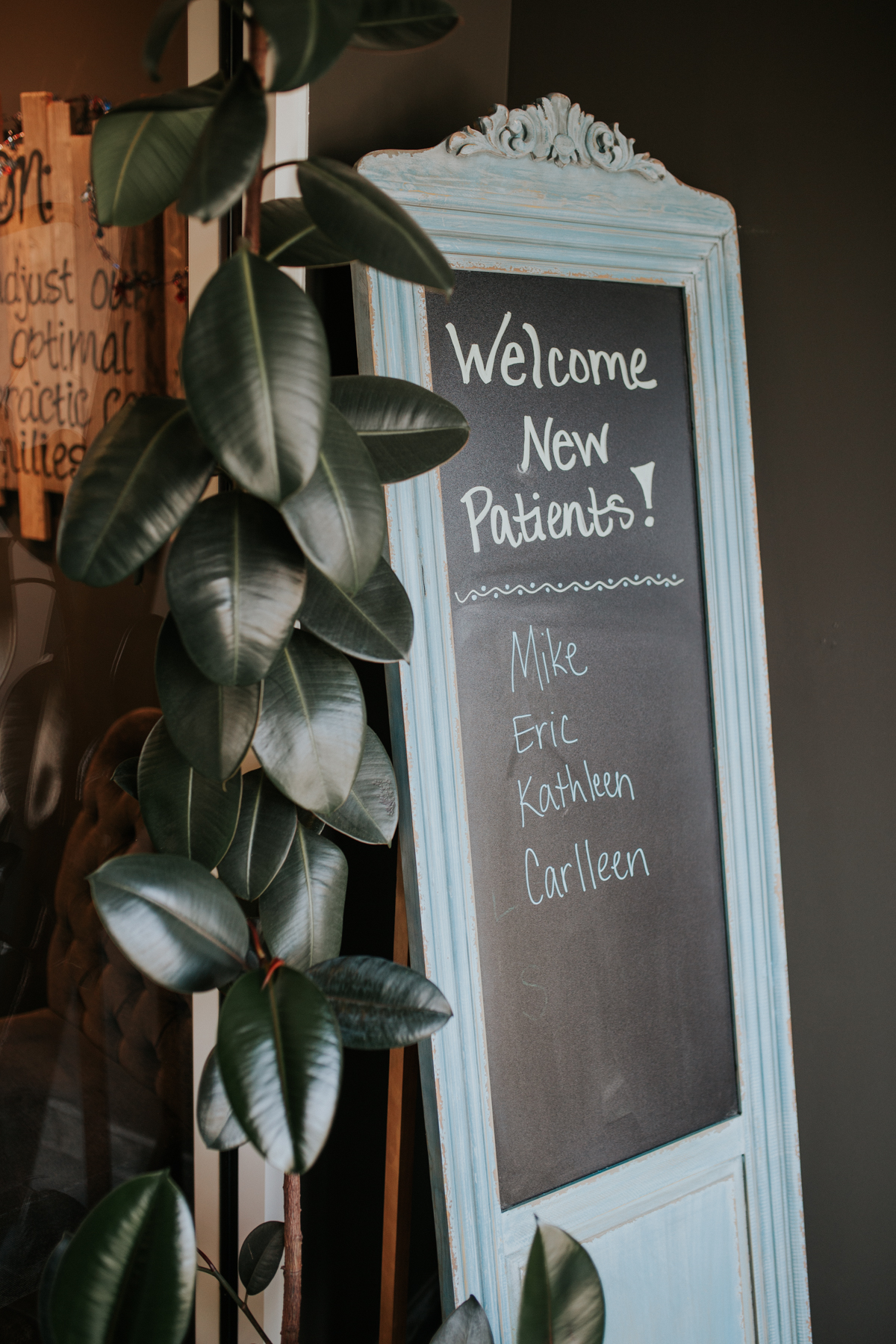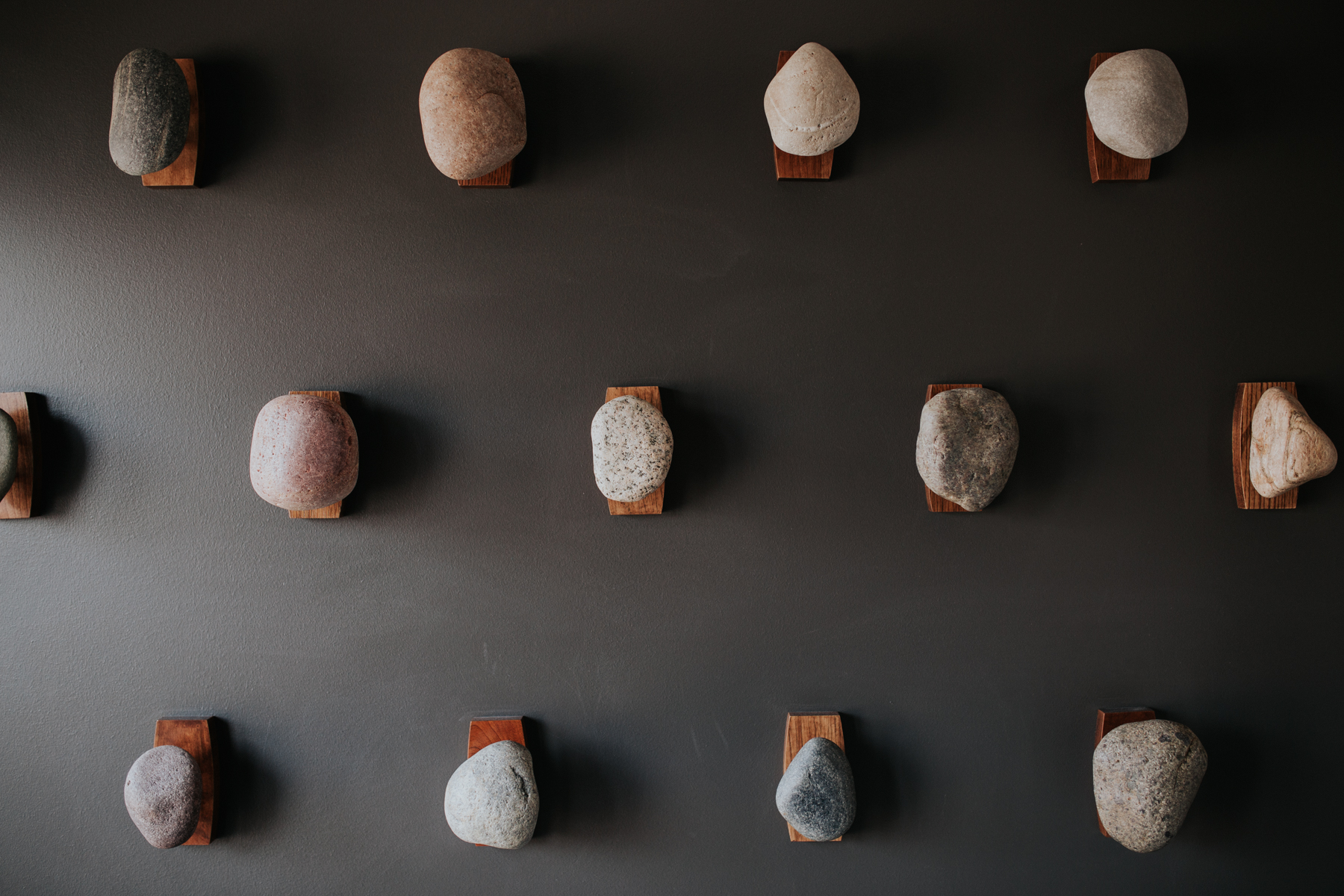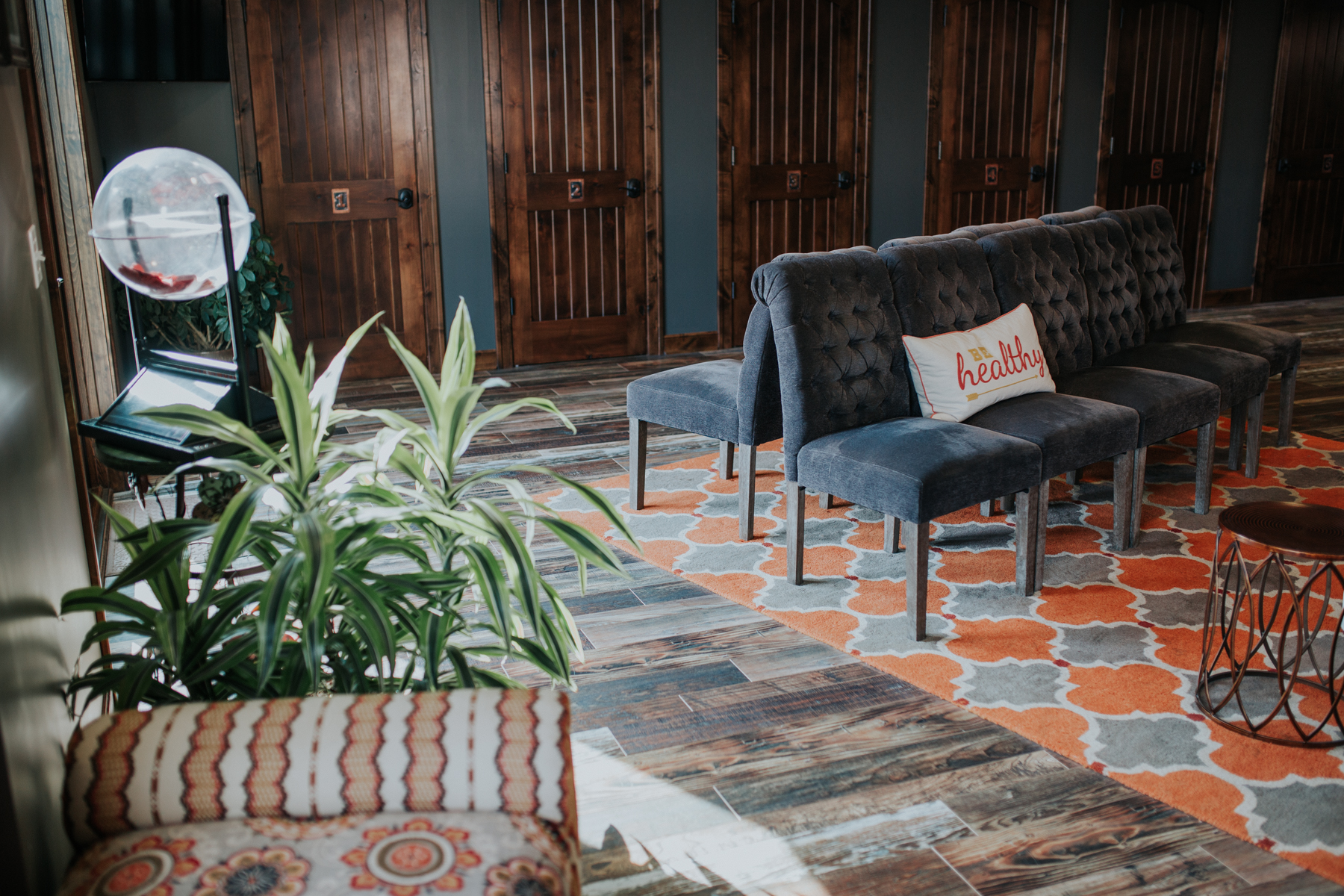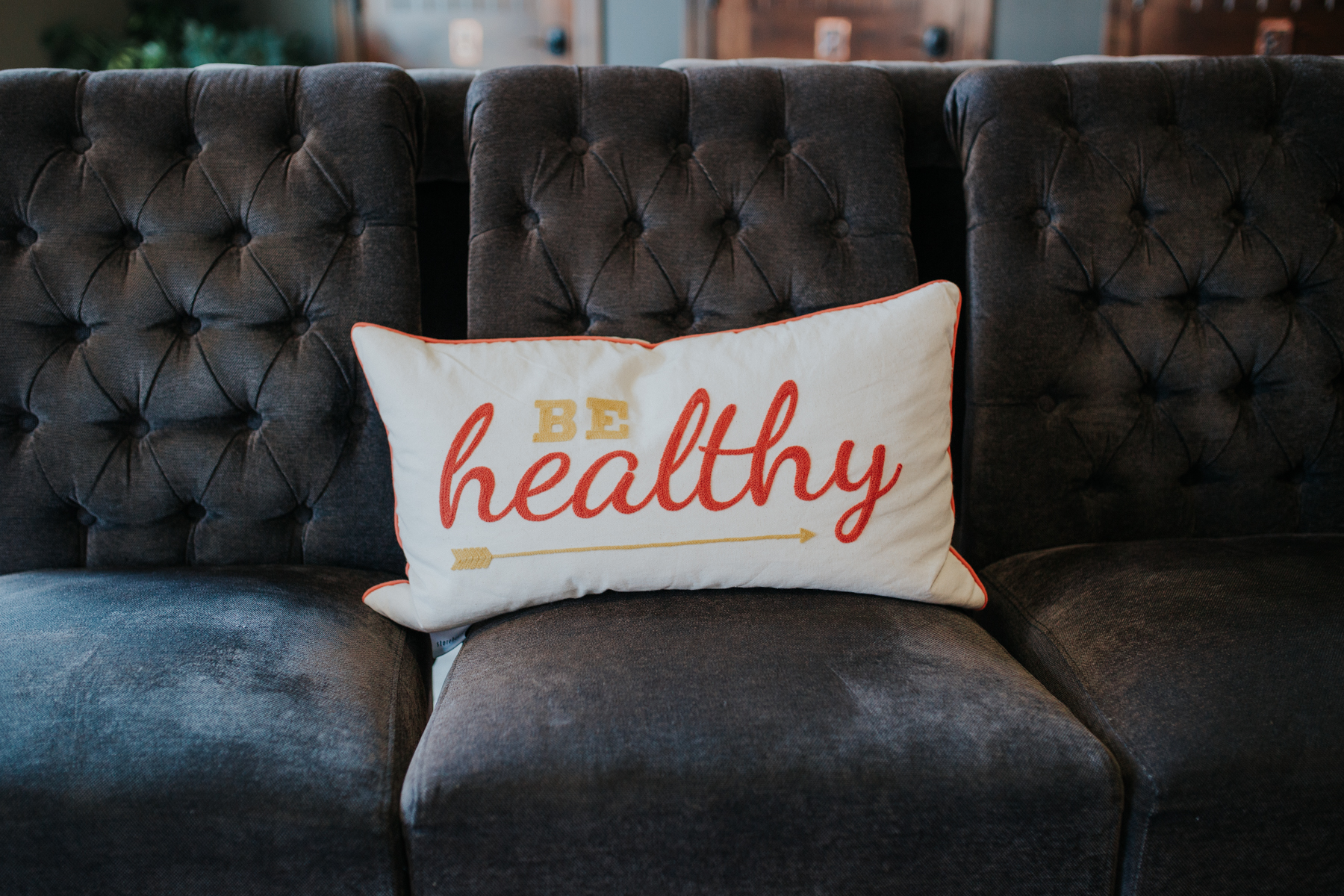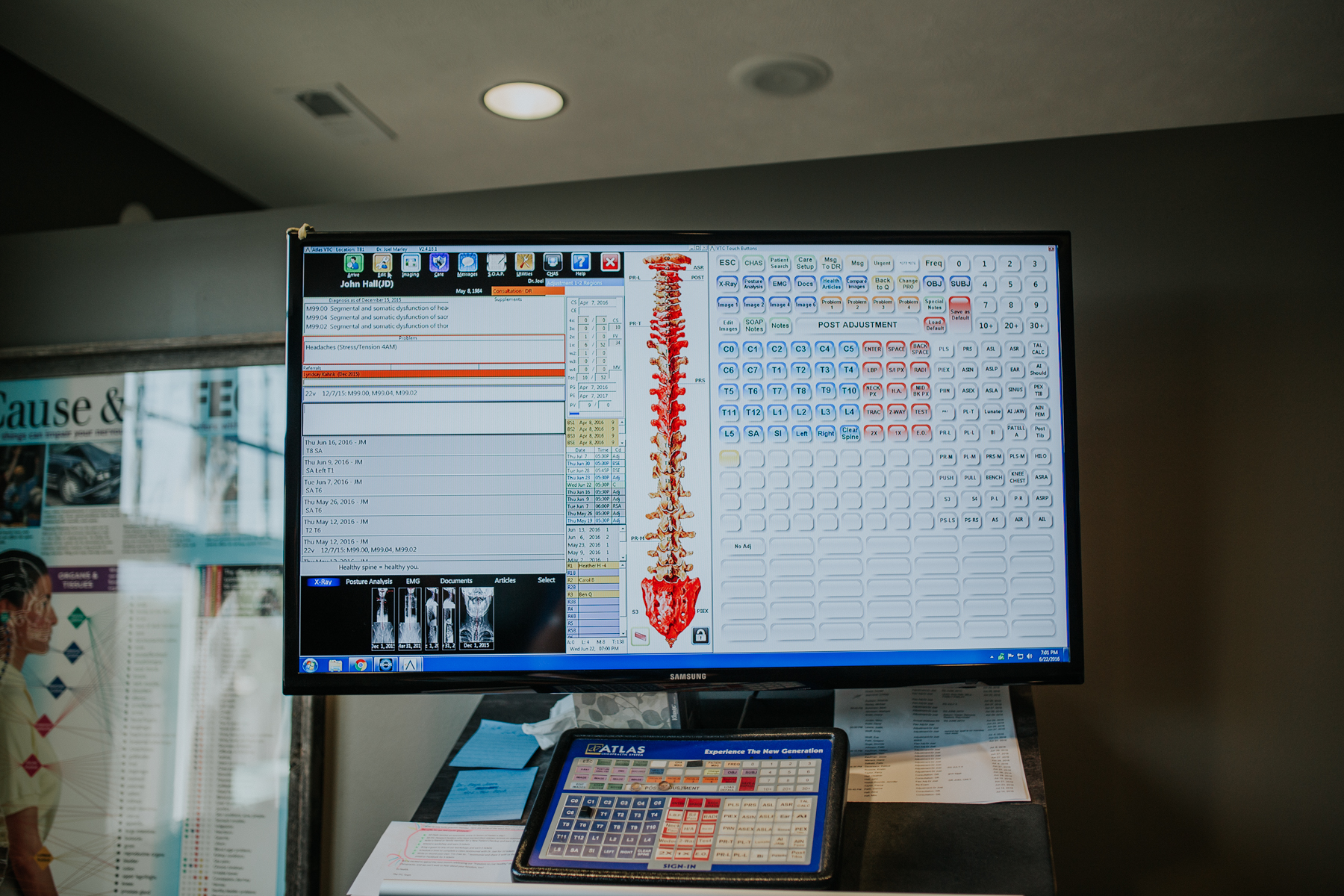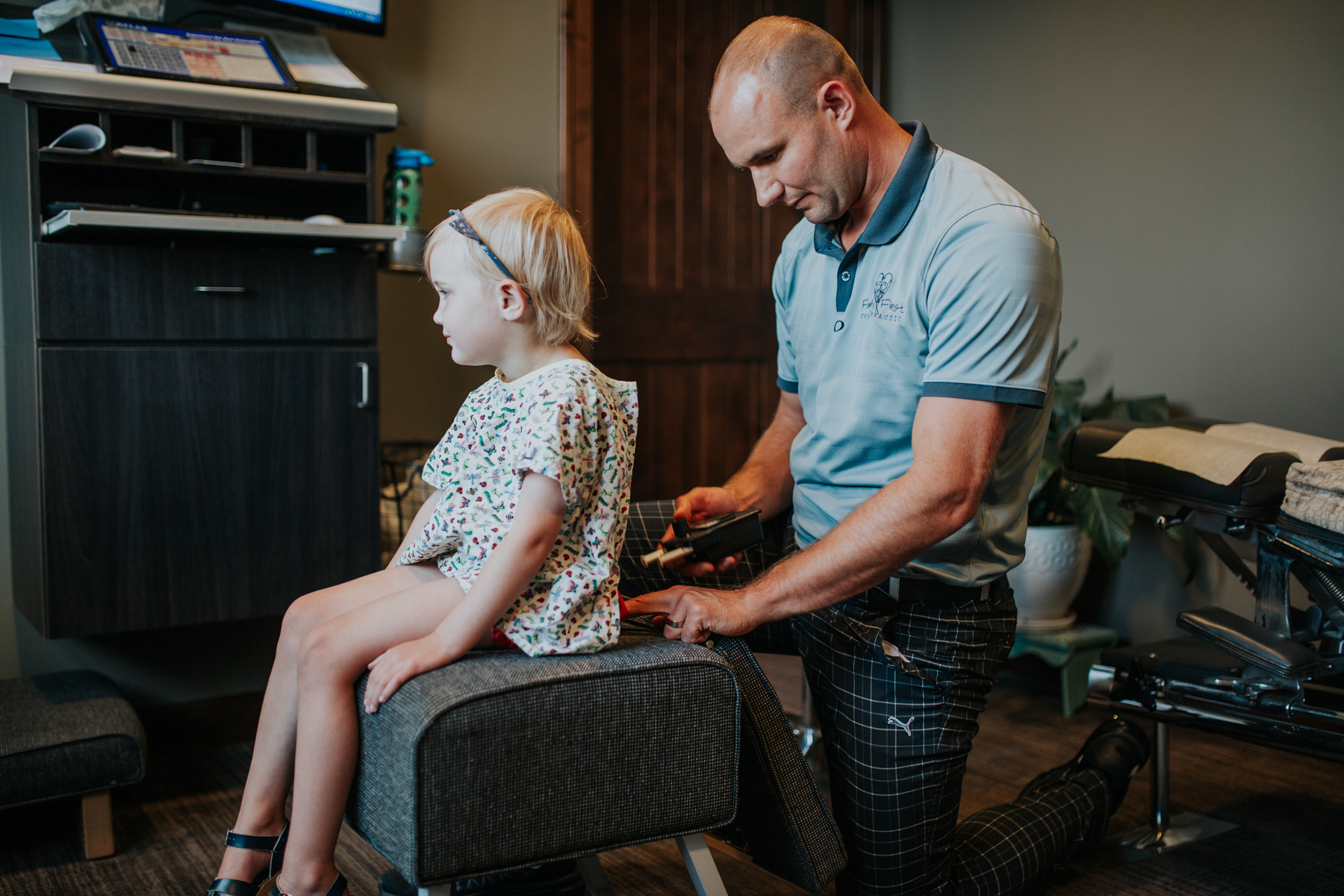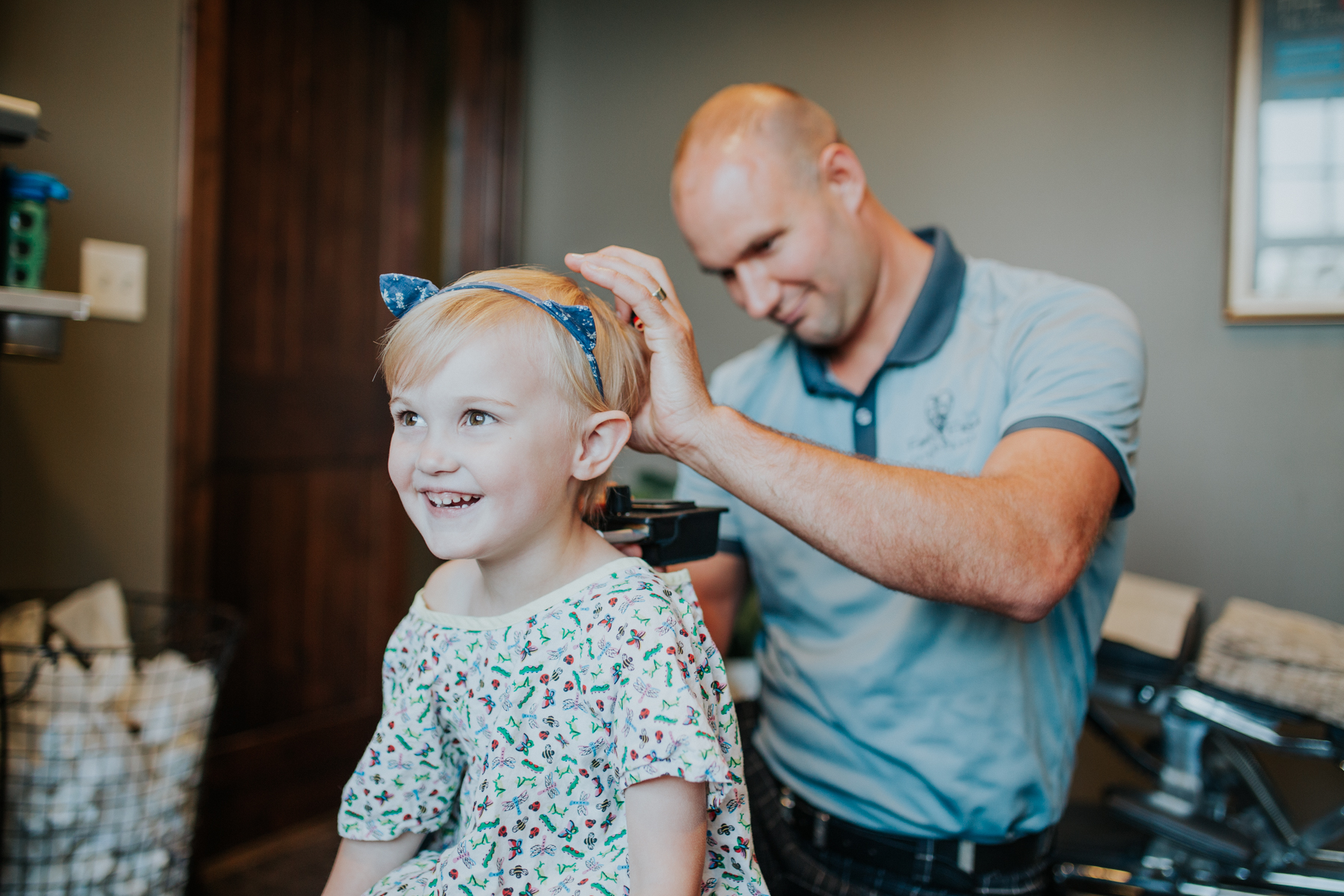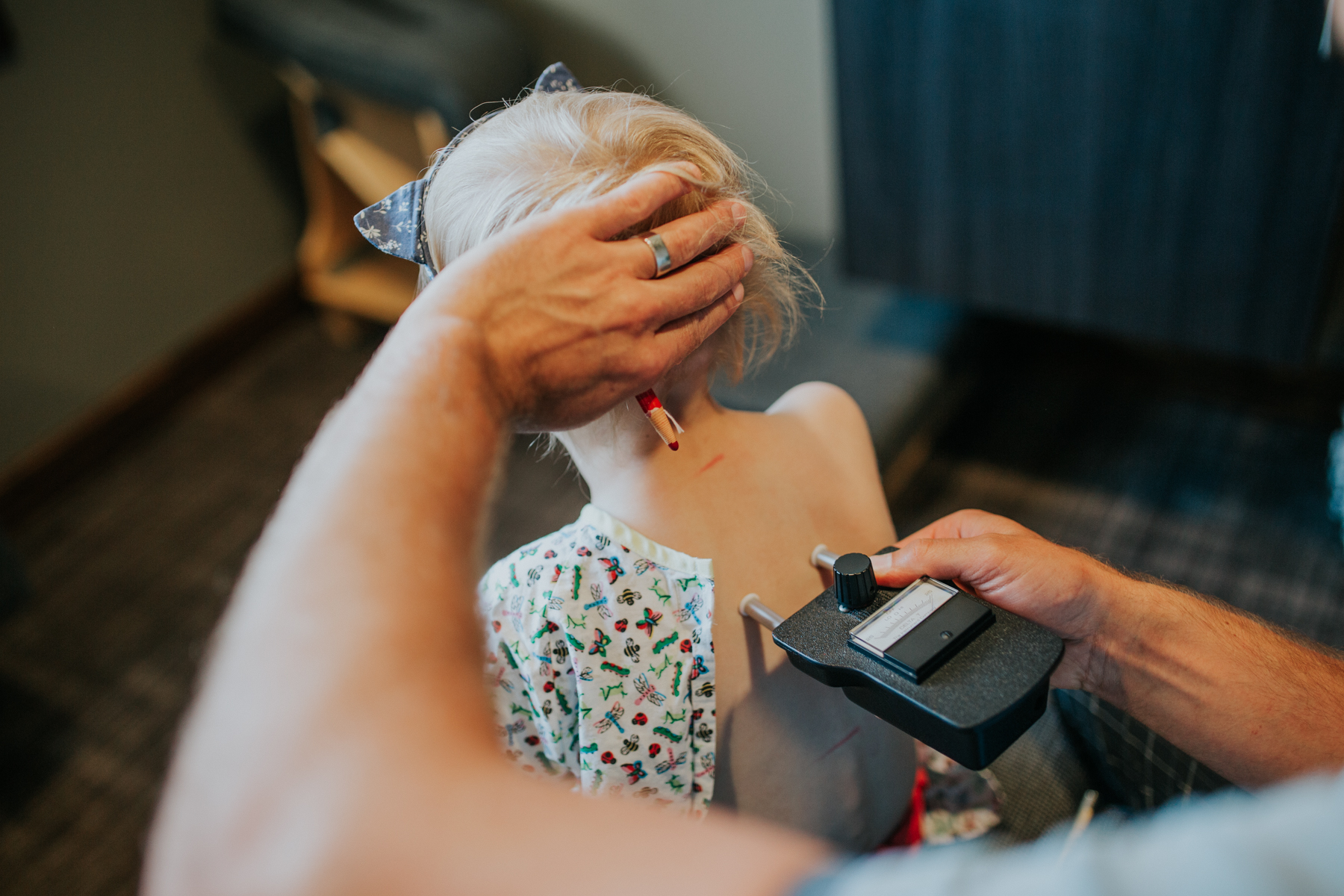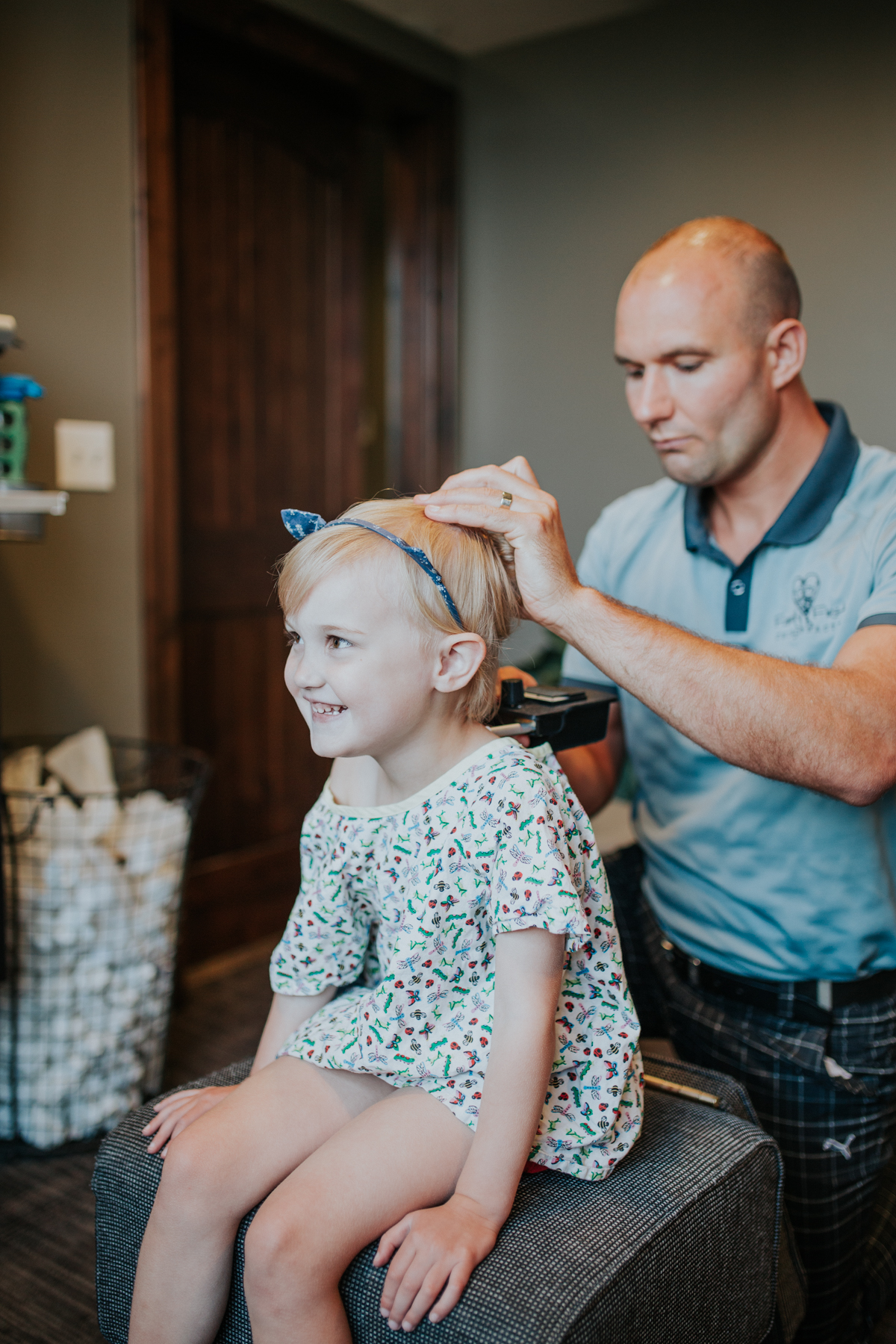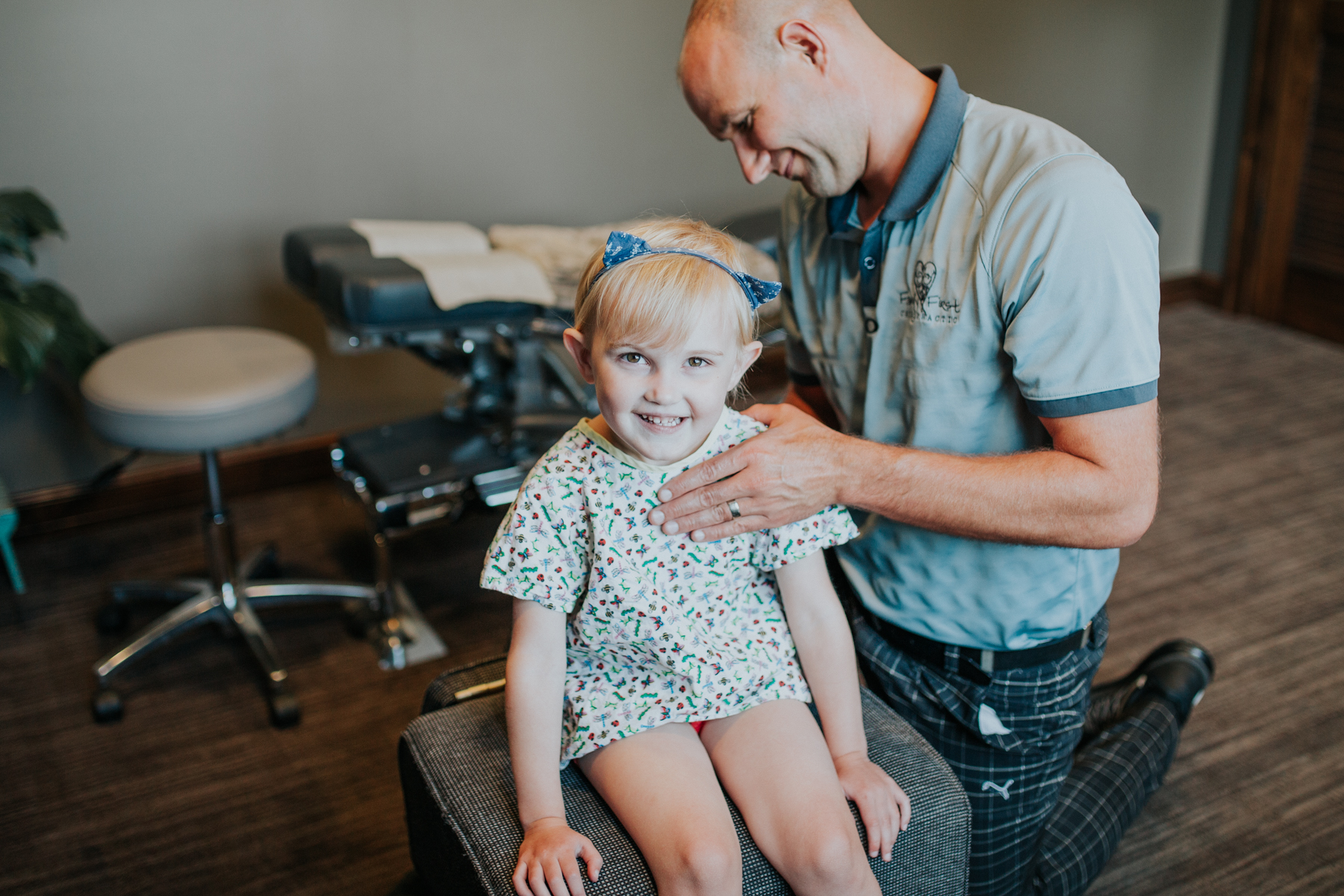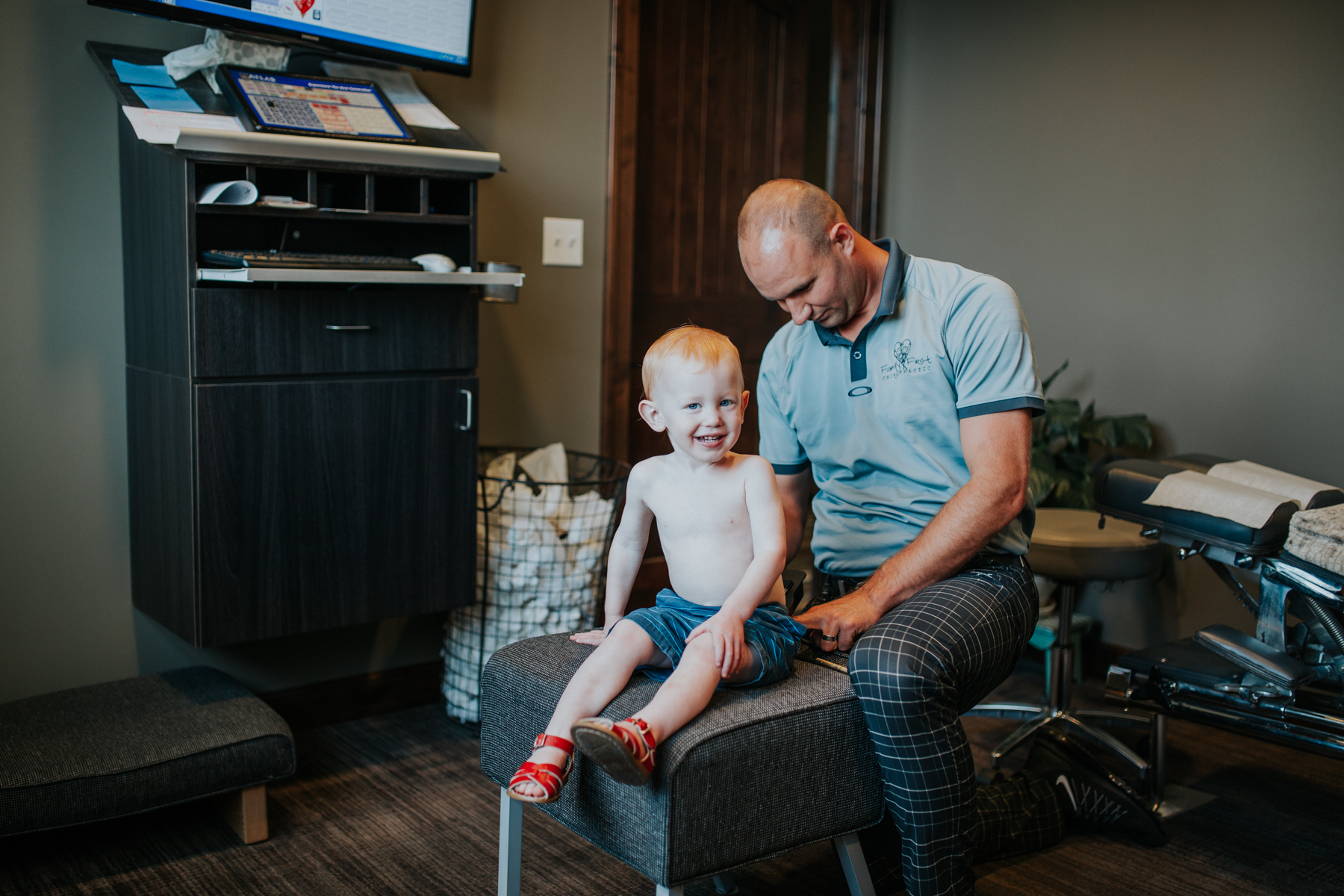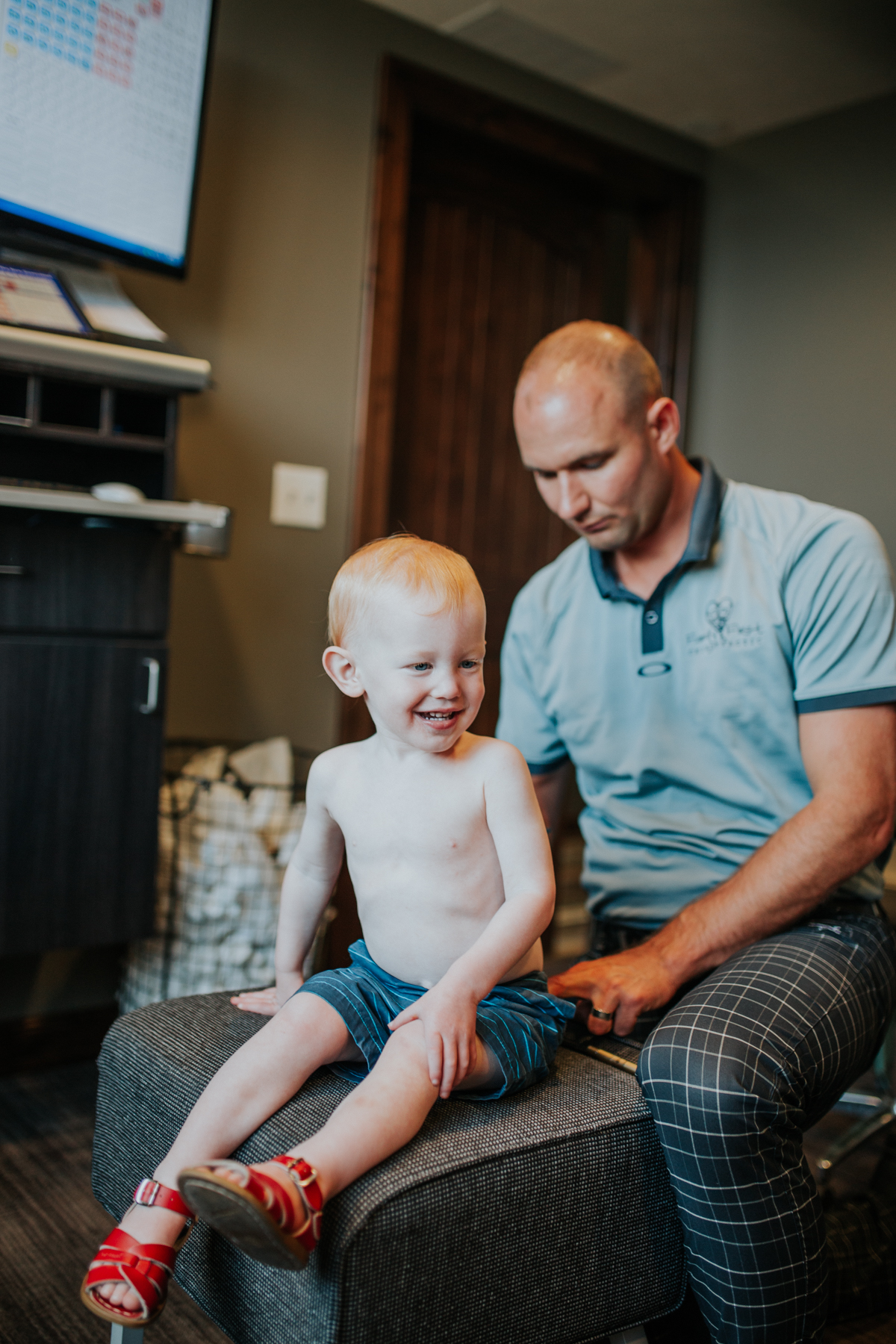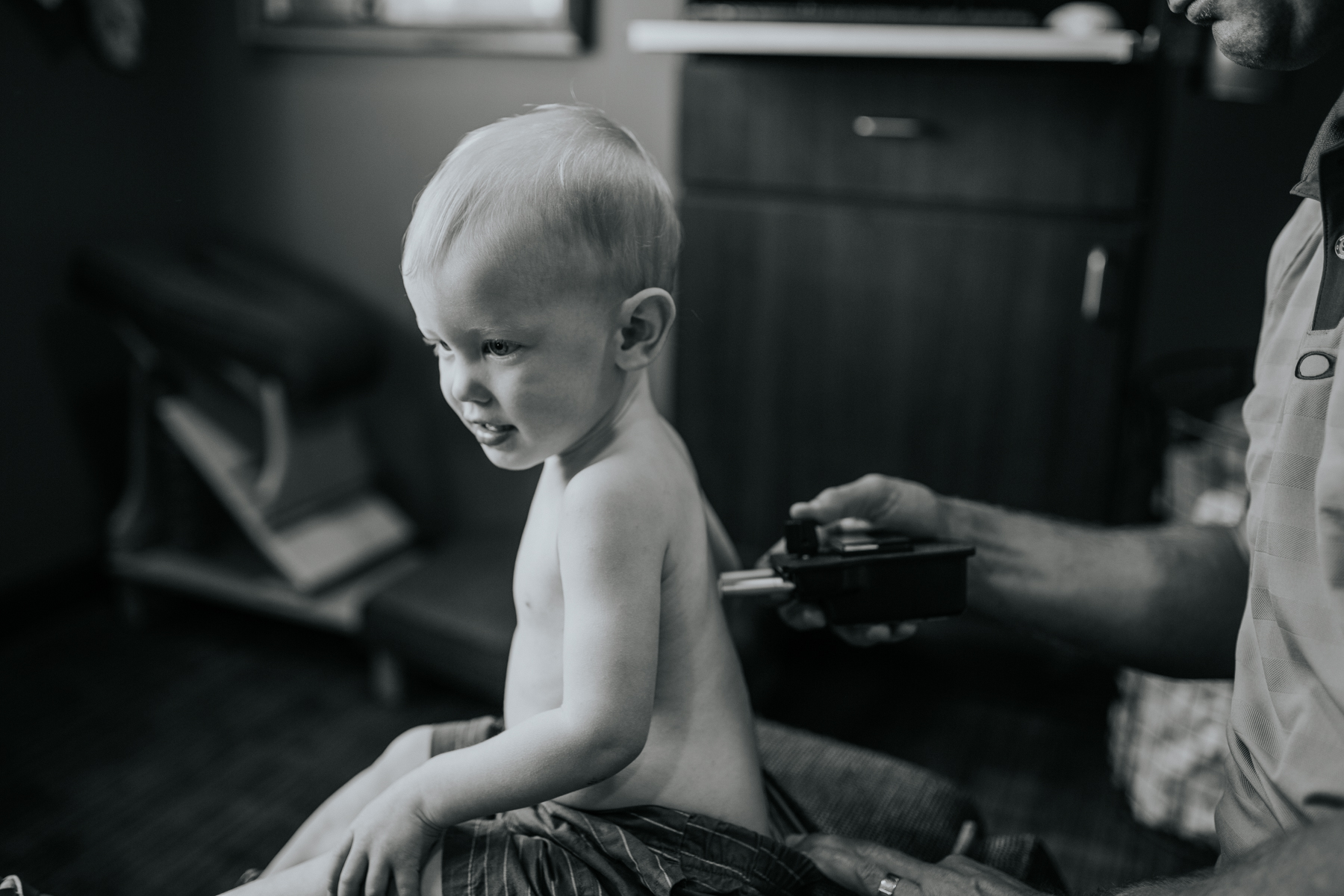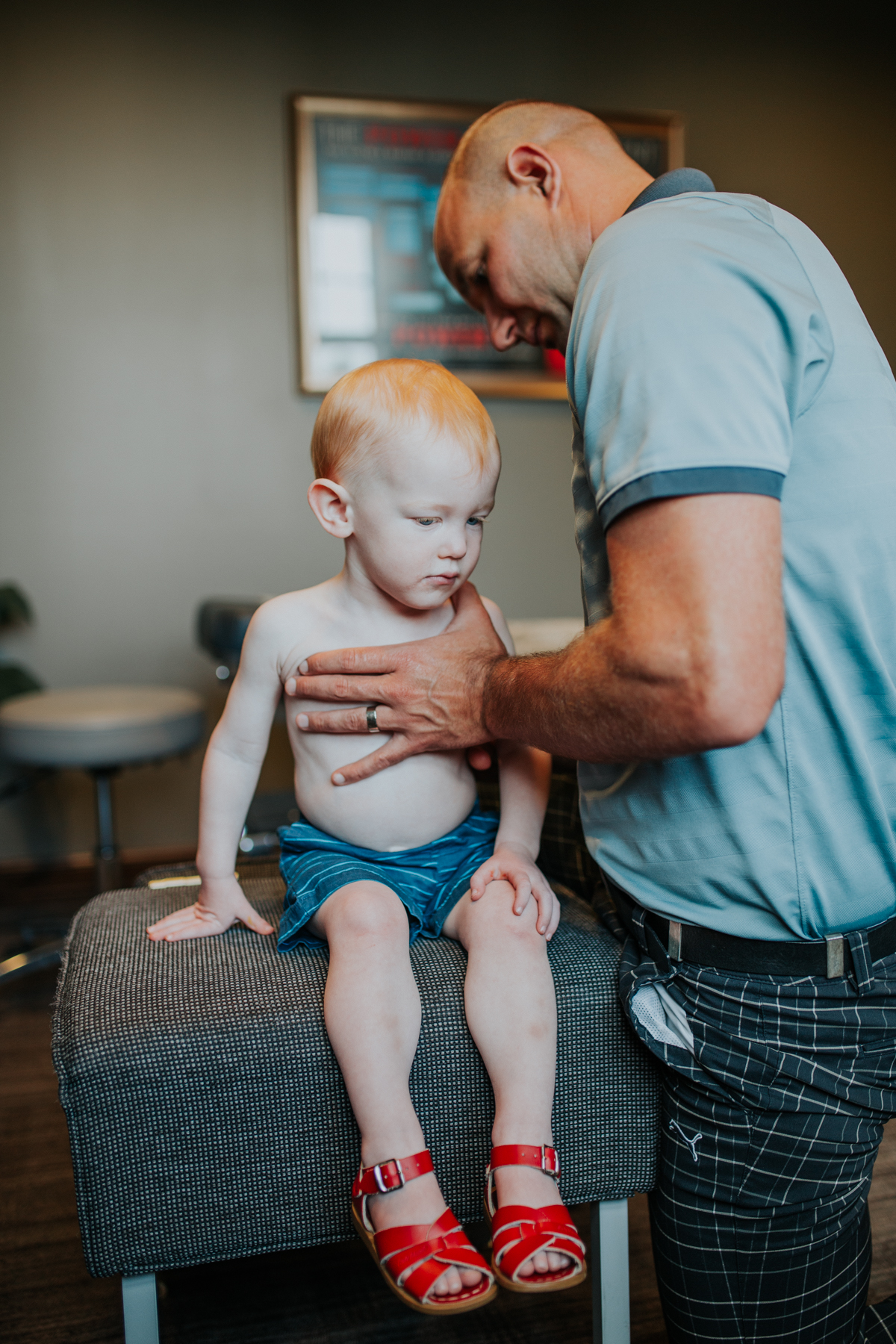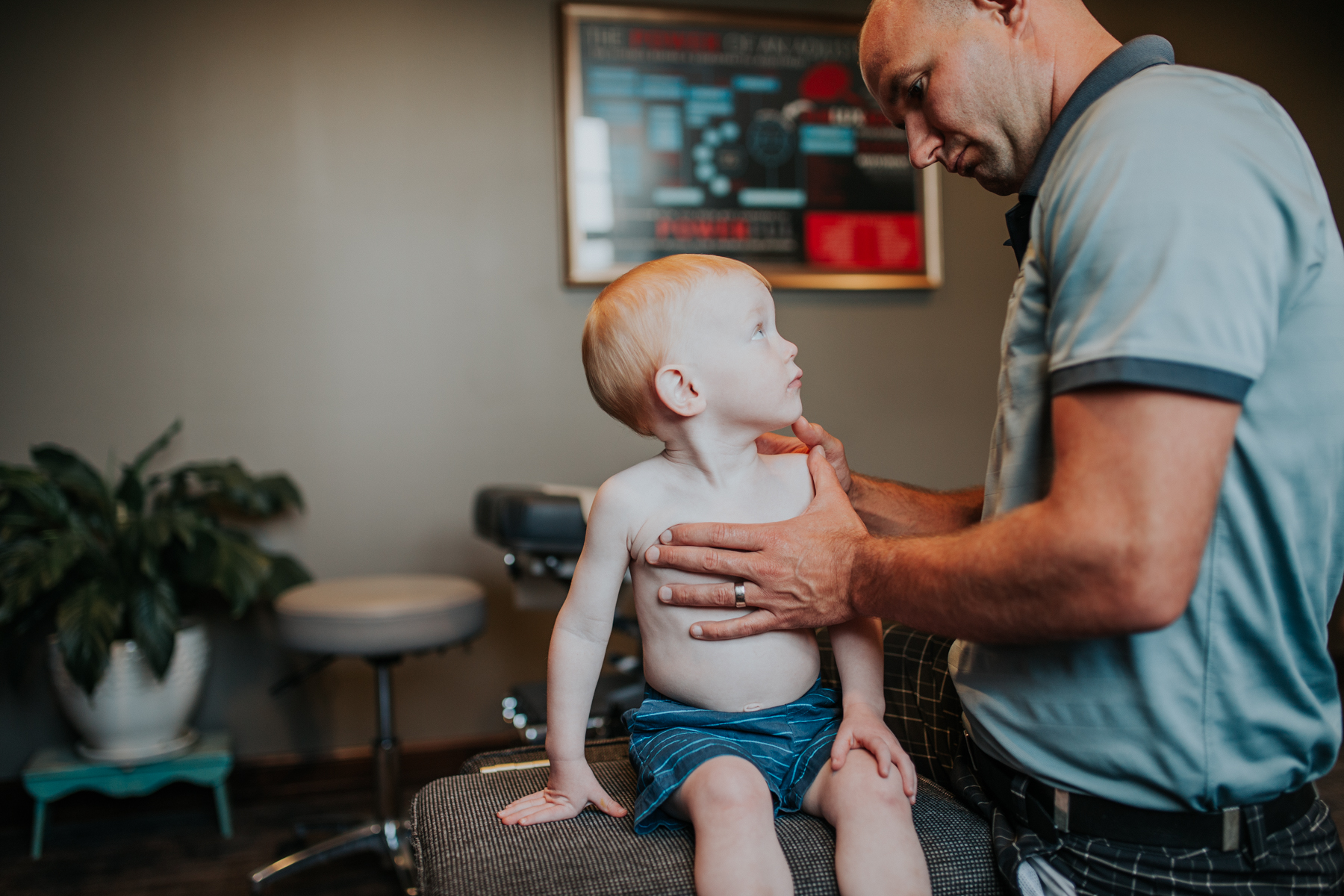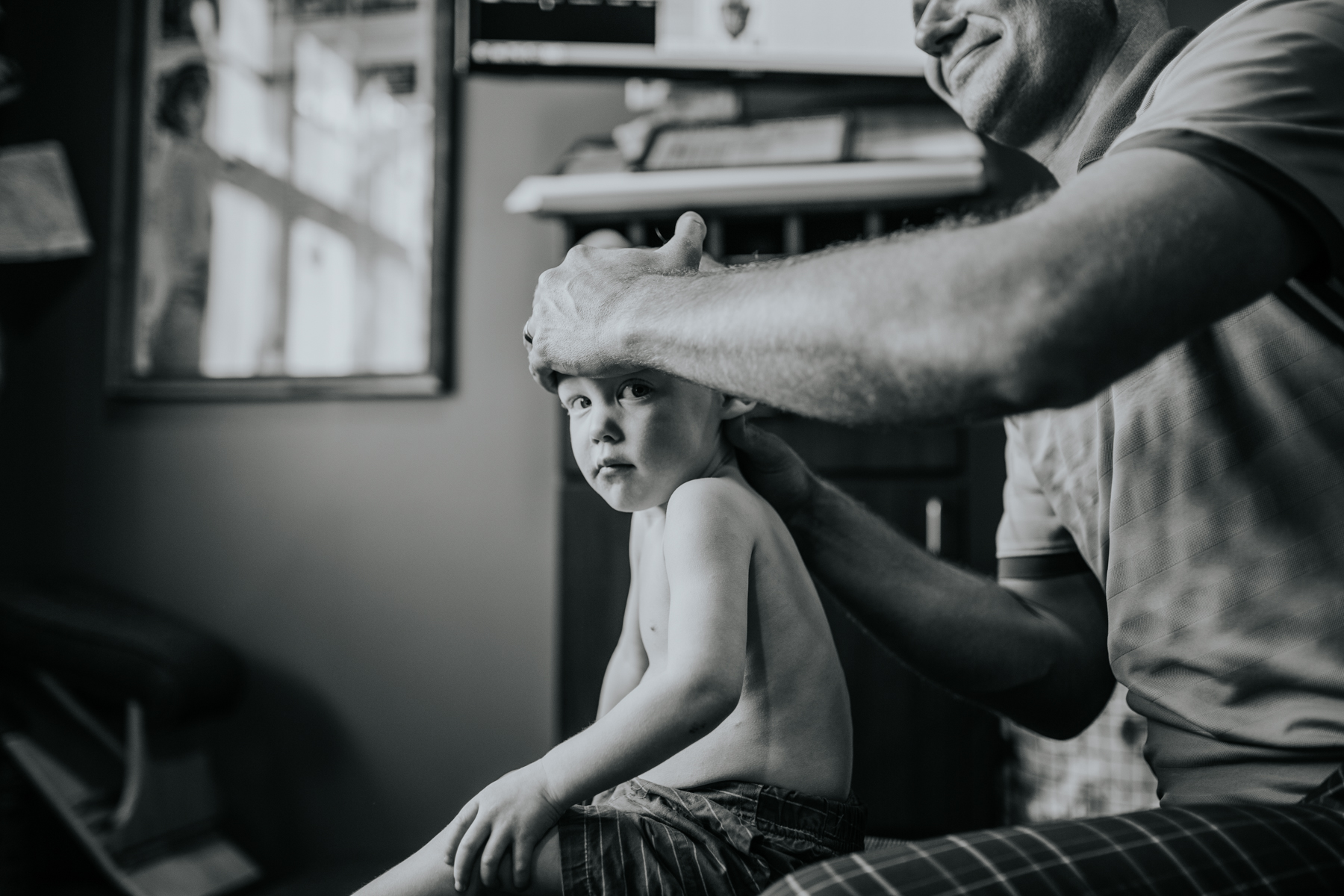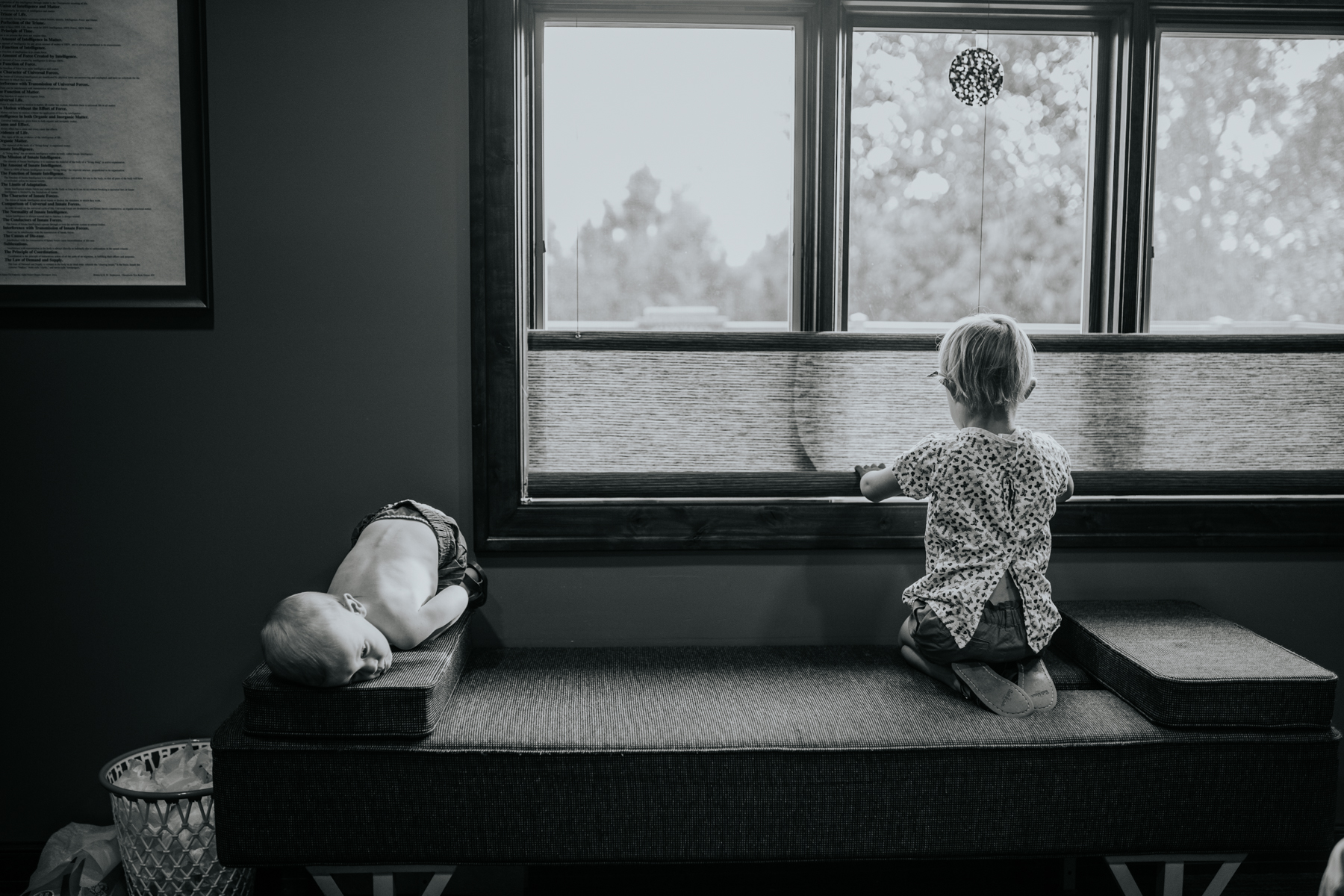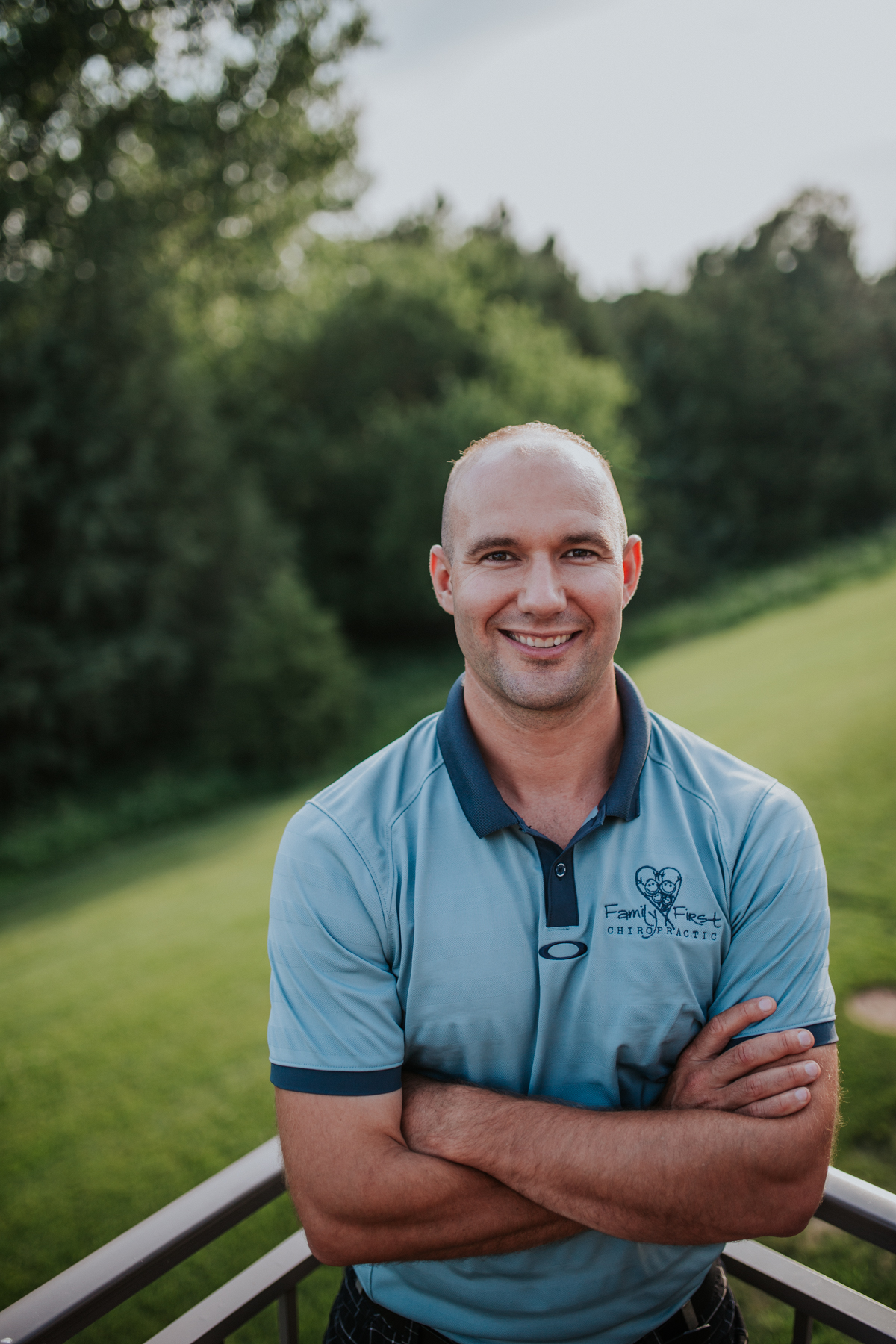Inside Look | Family First Chiropractic
Time to get up. Pain. Intense pain. Stiff lower back. Aching hips. Hurts to move. Am I only 29? This is reality for the rest of my life. How? How did I get here??
This was my internal dialogue until November of 2015. Every day.
A few months ago, our daughter Alice was playing doctor, and instead of getting out her doctor kit, she laid her baby doll down and said, "All right, pumpkin pie, it's time for your adjustment!"
You see, last November our little family began a new journey: we started going to the chiropractor. Not just when we were hurting, but every week, all four of us. (Want to see what it looks like? Keep scrolling!) Prior to visiting we had already adopted a more natural approach to health (e.g. gardening and eating real food, moving, probiotics, making kombucha, etc.), and caring for our nervous system became an obvious addition.
Subluxations (aka nerve interference) happen everyday and the damage compounds over time. This wear and tear markedly impacts our perception and quality of life. Every single day my back was stiff and aching. When turning my head in the car I rotated my entire torso to avoid the pain in my neck. I was not yet 30 and already I had resigned myself to a life of steadily worsening pain. This is not okay. Pain is not normal.
My x-ray (and mobilizer) from last winter:
This is my spine! (Blue line the ideal, red line reality.) Where did that huge "S" come from? And why?? And how did I lose the arc in my neck? So many questions, none more clear than "Can we fix it?" For the most part, yes. Whew. I am still in the corrective phase and will be for some time still, but slowly the root of the problem (trauma at the base of my spine from a fall I had years ago) is being corrected, and the curve slowly moves back to center. My body has leaned away from the pain for so long that my spine made a new normal - in the form of an arch. Seeing what my spine really looked like was the single most poignant thing that got my butt in gear.
Making adjustments a part of our lifestyle and giving our bodies - and ultimately our lives - their best chance has greatly improved our health and happiness. Over the past 8 months of regularly removing nerve interference, we have seen our immune systems boosted, a wider range of motion and encouragement to make other healthy choices (e.g. 2 weeks of Keto, kettlebell workouts, less sugar, etc.). Our children have had minimal colds and far less pain from injuries (why are they always jumping off of everything?!). I wake up without pain. I can move and not grimace at the thought of getting out of bed when it used to paralyze me. I'll never forget after my third adjustment how I was driving and turned my head to see what vehicles were coming behind me and I only had to move my neck. Not my torso, my neck. I was astonished. I couldn't remember the last time I could move just my neck. Now, instead of reacting to pain and sickness, we feel like we are in front of it, guiding our health and choosing optimal wellness instead of waiting for a catastrophe to strike.
One of the elements that we have appreciated about Family First is the initial checkup and x-ray. Seeing with our own eyes the state of our spines was an abrupt wake up call that we needed to make a decision. Choose a diminished quality of life and pain, or the best life we could? Because it is a choice. Inaction, however meant, is still a choice. As far as we are able, we choose the best and longest life to enjoy for ourselves and our family.
---
Recently I interviewed Dr. Joel and here is what he shares about chiropractic care and health...
What 5 truths or points would you want people to know about chiropractic care/well-being?
- Life can only be expressed through your nervous system. With a nervous system functioning at 100% you have 100% life expression. When your nervous system functions any less than that due to interference caused by our lifestyles, then your life expression will reflect that. Getting checked by a chiropractor regularly gives you the best chance at expressing life as close to 100% as possible.
- What you put into your body (nutrition) has a drastic influence on your state of health tomorrow. We forget too much that our bodies are machines that can only function with the right fuel. Yes, we can 'get away' with the wrong fuel here and there, but when the body isn't provided the right fuel on a regular basis it allows dysfunction, disease, and degeneration to rear its head.
- Health IS something. Disease is NOT something. Disease is the ABSENCE of health. You are either moving towards health with the accumulation of your choices day in and day out, or you are moving towards the ABSENCE of health, aka disease. Every single choice you make moves you one way or the other.
- Your mental/emotional well-being plays just as large of a role as what you put into your body. The more you feel stressed, depressed, negative, beat down, etc., the more your body responds to that because it cannot tell the difference from one stress to the next. ANY STRESS from the mind into the body causes a fight or flight response (survival mode) that when it is chronically in this fight or flight response, the normal day to day functioning and balance of the body gets put onto the back burner because the body is only worried about one thing: surviving. Think about that for a minute and ask yourself, "How much am I allowing myself to feel stressed?"
- What you eat and how you think, though, don't matter unless you have a nervous system that is functioning at its best. You could be trying to think the best thoughts (which is great) and eating the best foods (which is great), but if there is interference to the nerves that control the stress response or the digestive system causing it to function AS IF you are stressed or causing it to function AS IF you didn't eat any nutrients....all that work was for nothing. This is why I always start FIRST with every new patient in my office, working to answer the question, "How is this person's nervous system functioning?" How they eat, move, and think matters, and that will come next, but we always start with the main power source.
Is there a difference between chiropractic care and today's standard of health care?
Chiropractic exists within a totally different paradigm which in turn creates an entirely new and different objective. The paradigm that standard health care focuses on is an "outside-in" paradigm which means that something from the OUTSIDE (medications, surgery, etc.) is needed to fix a problem going on INSIDE (dysfunction, disease, trauma, etc.). The paradigm of health that chiropractic follows is the opposite: "inside-out." This simply means that the body can adapt and heal itself at all times from the INSIDE-OUT, so if there is something we are noticing on the outside or inside of the body that isn't expressing itself the way it should, then it is an indicator that the power INSIDE that body needs to be checked for interference. The objective is that by removing interference to the nervous system, it restores the power (life force) IN the body and the body can heal itself. Chiropractic and the standard health care are not one above the other, they are completely different entities with different paradigms and objectives. In short, standard medical health care objective: get rid of the symptom (drugs/surgery). Chiropractic objective: remove interference from the nervous system.
What misconceptions would you correct about chiropractic care?
One of the biggest misconceptions/misunderstandings is that people think if they aren't in pain, they don't need a chiropractor. Although this could be true for them, they would have to have lived in a bubble their entire life, never been exposed to any toxins, eaten so perfectly without an ounce of junk food, never thought a negative thought or been stressed, etc. Okay. You get it. NOT possible. Every single human being endures micro trauma after micro trauma each and every day, followed by toxic load in our environment and foods, in addition to major traumas like slips, falls, car accidents, and then add in unfortunate tragic events in our lives and here. We. Are. And the craziest thing to think about is that for many of us, this started right from Day 1 when we were born. That birth process can be very traumatic for new babies coming into this world. When we look at things from this angle we realize why we would MAYBE want to have our spines checked, even if we are not in pain.
Another misunderstanding is in regards to the "once you go you always do." Dang right! Why wouldn't you want your spine checked regularly once you know its real objective and purpose? And that is where it falls short for a lot of people. They have an experience with a chiropractor who chooses to have his/her objective of care be "outside-in" v. "inside-out" and only focus on removing the symptom. Misconceptions happen when chiropractic gets placed within a paradigm it doesn't belong in. So, many people go to chiropractors that will see them for one or two visits, or until the pain or symptom goes away, and then they tell patients to come back when it hurts again. (This just shows how great chiropractic is - it always works and always will.) What is unfortunate in these circumstances is that these people are getting a symptom fixed for a problem that isn't going away. Symptoms are a late sign of a problem that exists. We FEEL our subluxations last - not first. These people in pain are actually the people who need corrective chiropractic care more. If they were to place themselves within a chiropractic setting that focuses on checking their spine regularly and removing the subluxations (interferences) to their nervous system then they would experience stabilizing joints, stopping the process of degeneration, training the body to correct itself back to normal, and eventually have full function. These people would never have those crisis moments of pain because their body has been corrected. At that point, they would be checked much less often as their body is strong again.
What other lifestyle changes compound the added benefits of chiropractic care?
Like I mentioned above, how well you eat, think, and move compliment and fuel the body. Obviously we all eat, think, and move, but the big question is HOW WELL. One should be striving every day to be consuming 80+% vegetables (10-12 servings) in their diet. One should be striving every day to live out a purpose in and for their life. One should be striving every day to be moving with a sustained raised heartbeat and sweating (aka exercise) for at least 30 minutes per day. We all know this to be true, we just don't do it. But, I am here to ask, "Do you want to live to 70, 80, 90 years old and have regrets or have zero?" That is a big question to ask yourself, but for me, I want to be traveling the world at 90 years old; and not with a walker if I can help it.
What is your philosophy towards health?
Find the joy in every moment, but at the same time make sure that this temple that God gave you to live in is allowing you to express life at 100% - the way He designed it for you. When you can express life fully then you can enjoy life more fully, and that is why God made chiropractors - to keep you living fully. Also, stick to the 80/20 rule. I understand that no one is perfect and God never intended for us to be. As long as 80% of the days of the week involve exercise, you are doing great; rest the other 20%. As long as 80% of the food you consume is healthy and nutritious, you are doing great; enjoy some junk a little....but just a little. As long as 80% of the time you feel stress-free and balanced, a little bit of stress is okay and can be a positive challenge to help you grow into who you are. And lastly, pay it all forward. When you come upon something so profound and good for yourself that it brings forth a much better life for you and your family, don't keep it a secret. Tell others. They deserve a great life, too.
---
Thank you, Dr. Joel! Here's an inside look at Family First Chiropractic and a typical adjustment with out littles :D
Alice & Milo play awhile, and on days they don't get adjusted with us, they color with the gals at the front (I think "babysitting" is honestly in their job description - they're so good with kids!) Once it's our turn, we go into one of the 6 waiting rooms - which we fondly refer to as "the bull pen" - where we change and wait for our adjustments. Dr. Joel opens the door with fanfare, shakes our hands, uses a tickling device that determines inflammation (I'm sure it has a really technical name but the littles giggle so much when he checks them!) and marks where he notices it. As he consults our scans and former notes on a large display screen, he evaluates the best plan of attack for the day. Every adjustment varies but always with the same goal: alignment and restoration. The kids climb every surface possible. They are underfoot. Dr. Joel beams. We swap stories. We experience relief. We leave, all systems go.
---
Pain does not have to be your reality. I'm so grateful it's no longer mine. :)
---

